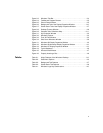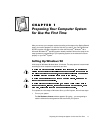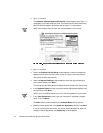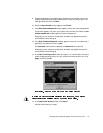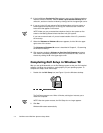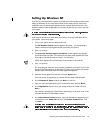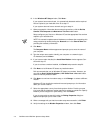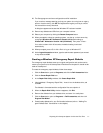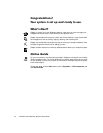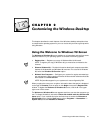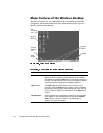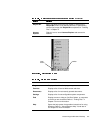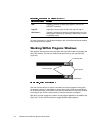
Preparing Your Computer System for Use the First Time 1-7
20. The Setup program continues configuration and file installation.
If you receive a message warning you that your system is running low on registry
quota or virtual memory, click OK. Dell adjusted the registry so that you should
not exceed the memory threshold.
A dialog box appears and states that Windows NT has been installed.
21. Remove any diskettes and CDs from your computer’s drives.
22. Reboot your computer by clicking the Restart Computer button.
23. When prompted to select an operating system, use the up- or down-arrow key
to highlight Windows NT Workstation Version 4.00 (default setting) or
Windows NT Workstation Version 4.00 (VGA Mode). Then press <Enter>.
If no action is taken within 30 seconds, the default setting is selected
automatically.
24. When prompted, press <Ctrl><Alt><Del> to log on to Windows NT.
25. At the Logon Information window, type the administrator password you entered
in step 9 and click OK.
&UHDWLQJD:LQGRZV17(PHUJHQF\5HSDLU'LVNHWWH
The emergency repair diskette saves your original configuration and can be used to
restore your system to its initial setup state if files become corrupted. It should not be
used as a backup tool.
To create the emergency repair diskette, follow these steps:
1. Click the Start button, point to Programs, and click the Dell Accessories folder.
2. Click the Create Repair Disk icon.
3. In the Repair Disk Utility window, click Create Repair Disk.
4. Label a diskette ”Emergency Repair Disk,“ insert it into the diskette drive, and
click OK.
The diskette is formatted and the configuration files are copied to it.
5. When the Repair Disk Utility window reappears, click Exit.
6. Remove the diskette from your diskette drive, and store it in a safe place.
7. Click the Start button, point to Programs—>Dell Accessories, and then click
Program Disk Maker.
8. Create backup diskettes for your Dell-installed software (refer to “Making Pro-
gram Diskette Sets” found earlier in this chapter).



